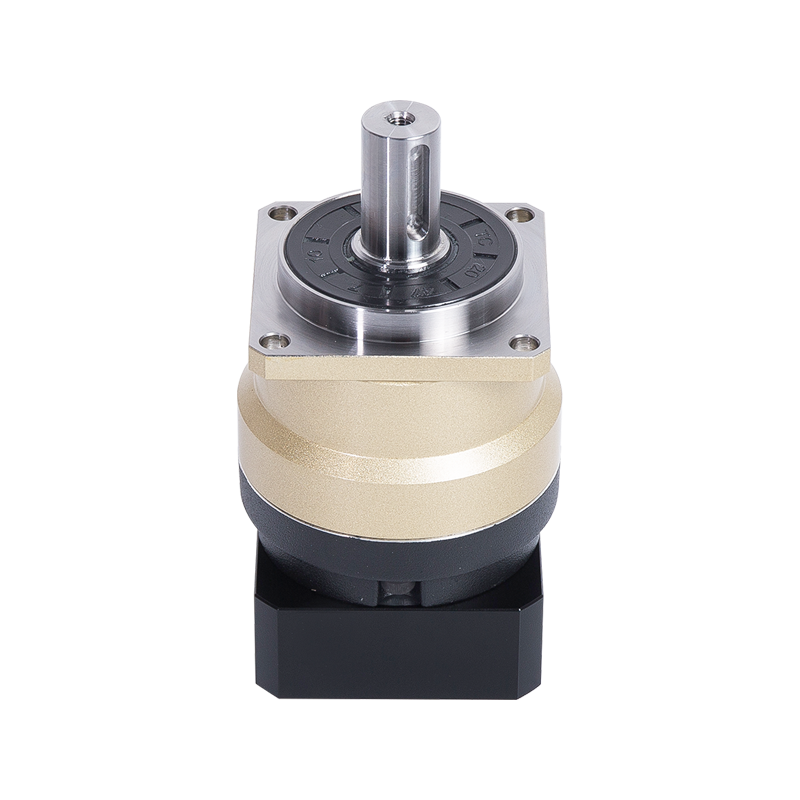Servo Motor MKT Precision Planetary Reducer
Cat:MK series planetary reducer
Meet the needs of customers with high precision requirements for semiconductor devices, automation equipment, machine tools, etc.Applicable to: Door d...
See DetailsIn an age where automation drives progress, precision is not just desired—it’s demanded. Behind the scenes of advanced machinery lies a silent hero: the reducer paired with a servo motor. While often overshadowed by flashier components, this dynamic duo plays a central role in modern motion control. So, what makes a reducer with servo motor so indispensable?
Understanding the Synergy
A servo motor, by design, offers high-efficiency control of angular or linear position, velocity, and acceleration. It is engineered for accuracy. But no matter how precise the motor, without a proper means of torque multiplication and speed control, its full potential remains untapped. That’s where the reducer steps in.
Reducers—also known as gearboxes—translate high-speed, low-torque input from the servo motor into high-torque, low-speed output. In doing so, they not only amplify force but enhance positioning accuracy and load-bearing capacity. This mechanical advantage is critical in robotics, CNC machinery, packaging lines, and countless other applications where failure is not an option.
Why Pair a Reducer with a Servo Motor?
Servo motors are not inherently designed to handle heavy loads directly. Without a reducer, the motor would need to be oversized—costly, bulky, and energy-inefficient. A precision reducer allows engineers to use a smaller, more efficient motor to achieve the same or even better results. It’s a perfect equation of cost-effectiveness and performance.
Moreover, reducers dampen vibration and absorb shock loads. This stabilizing effect not only protects the motor and connected components but also ensures repeatable, reliable performance over the long haul.
Types of Reducers for Servo Systems
Several types of gear reducers are commonly used with servo motors, each selected based on the application’s nuances:
Planetary Gearboxes: Highly efficient and compact, ideal for high-precision tasks. Their symmetrical design allows for uniform load distribution, resulting in minimal backlash.
Harmonic Drive Reducers: Known for zero backlash and compact size, though more delicate and often pricier. Perfect for surgical robots and semiconductor machinery.

Helical Gear Reducers: Quieter operation and smoother meshing make these ideal for applications where noise reduction is crucial.
Each variant has its own strengths—and the selection should hinge on accuracy requirements, space constraints, torque demands, and operational life expectancy.
Key Performance Metrics
When evaluating a servo motor and reducer pair, several factors must be scrutinized:
Backlash: Lower backlash equals higher accuracy. For applications requiring pinpoint precision, a planetary or harmonic drive reducer is preferable.
Torque Output: The right reducer enhances torque without overloading the servo motor.
Efficiency: High-efficiency gear systems prevent energy losses and overheating.
Service Life: Quality gear design and lubrication determine how long the system operates without fail.
Applications Across Industries
From automated assembly lines to satellite positioning systems, the servo motor-reducer integration is omnipresent. In medical devices, it ensures the precision necessary for robotic surgery. In aerospace, it enables the accuracy required for satellite dish positioning. In manufacturing, it drives productivity with repeatable, smooth motion.
A reducer with servo motor is not just a mechanical pairing—it’s a finely tuned alliance that ensures machines run smarter, stronger, and more reliably. Without it, modern automation would stumble.
So the next time you witness a robotic arm assembling with near-human dexterity or a CNC machine carving with flawless precision, remember this understated partnership. It may not get the spotlight, but it makes the performance possible.